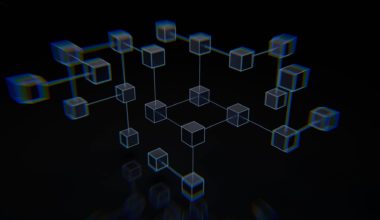Deep learning is a branch of artificial intelligence that is becoming a key technology in the industry.. Deep learning algorithms mimic the way the human brain learns and makes decisions, making them ideal for applications in areas such as computer vision, Natural language processing and data analysis. In this article, We'll explore the key concepts behind deep learning, How algorithms work and how you can implement them in your own programming projects.
Introduction to deep learning
Deep learning is a branch of artificial intelligence that focuses on developing machine learning algorithms that mimic the way the human brain learns and makes decisions.. These algorithms are based on artificial neural networks, which are software structures designed to mimic the way neurons in the human brain connect and transmit information..
Deep learning has had a significant impact on the industry, and has been successfully used in a wide variety of applications, Including:
- Computer vision: Deep neural networks have been used to classify images, Detect objects and perform real-time object tracking tasks.
- Natural language processing: Deep learning algorithms have been used to solve tasks such as machine translation, Text generation and answer questions.
- Speech recognition: Deep neural networks are used for automatic recognition and transcription of the human voice.
- Data analysis: Deep neural networks have been used to analyze large data sets and detect patterns and relationships that may have applications in various sectors., Like banking, Safety and medicine.
- Fraud detection: Deep neural networks have been used to detect fraudulent transactions in real time, which has significantly improved the effectiveness and efficiency of fraud detection solutions.
- Recommendations: Deep neural networks are used to recommend products, Services or content based on users' previous preferences and behaviors.
These are just a few examples of the applications of deep learning in the industry. Over time, This technology is expected to continue to evolve and integrate into a wide variety of applications and sectors..
How deep learning algorithms and key concepts work
Deep learning is based on the idea that artificial neural networks can learn on their own from the data they receive.. These algorithms are trained on large labeled data sets, and as they run, adjust weights and connections between neurons to produce more accurate results.
The learning process in a deep neural network is divided into two phases: The training phase and the inference phase. During the training phase, The neural network receives an input and uses that input to calculate an output. The output is compared to a correct label or response, and is used to calculate a loss, representing the margin of error between the output and the correct answer. The neural network uses this information to adjust its weights and connections., and this process is repeated many times until the loss reaches an acceptable level..
During the inference phase, The neural network is used to make predictions about new data. In this phase, The neural network uses its weights and adjusted connections to receive an input and produce an output.
It is important to note that deep neural networks are supervised learning algorithms., which means they require a labeled dataset to train. However, There are also other variants of deep learning, such as unsupervised learning and reinforcement learning, that can be used in different applications.
Conclusion
In conclusion, Deep learning is a key technology in the industry that is based on the development of machine learning algorithms that mimic the way the human brain learns and makes decisions.. Has been successfully used in a wide variety of applications, including computer vision, Natural Language Processing, Speech recognition, Data analysis, Fraud detection and recommendations. The technology is based on the idea that artificial neural networks can learn on their own from the data they receive., and the learning process is divided into two phases: The training phase and the inference phase. Deep learning is expected to continue to evolve and integrate into a wide variety of applications and industries in the future..






